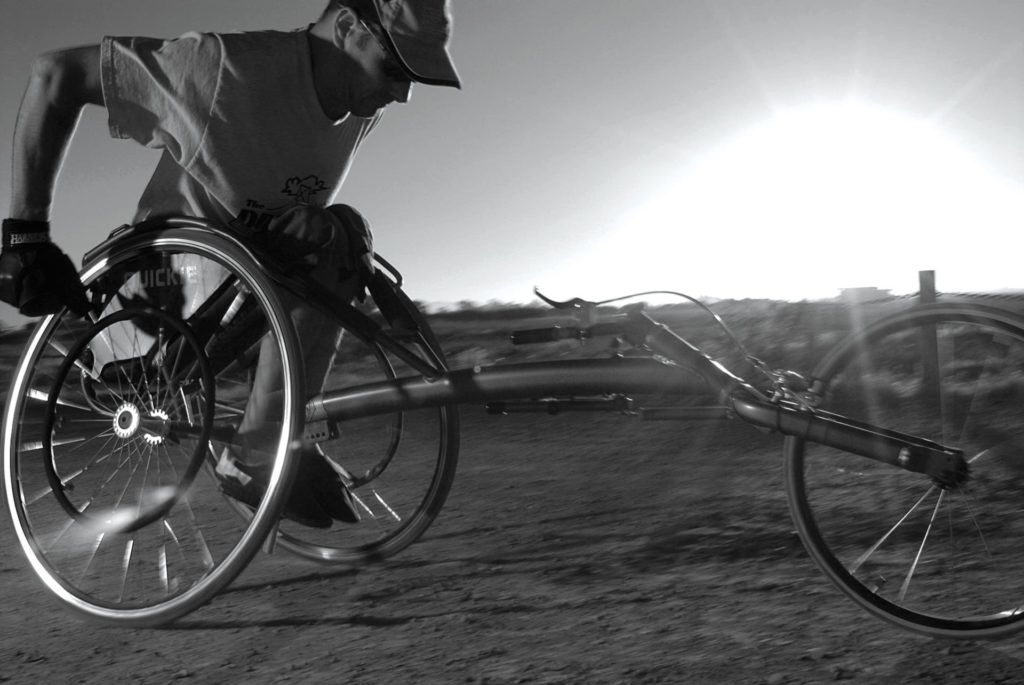It was eight months earlier when the concept of completing an Ironman competition entered my consciousness. Not in the way so many other far-fetched ideas have come and gone. This time the idea stuck.
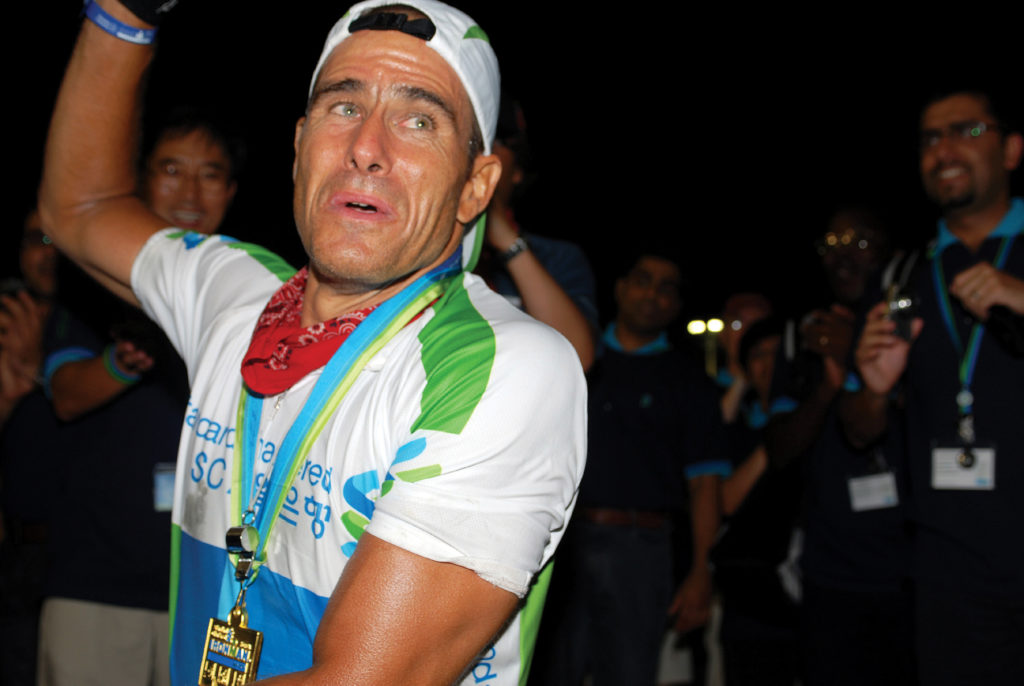 Given the green light by Standard Chartered Bank, the title sponsor of the Ironman Korea 2006 race, I began cobbling together the items and stamina I suspected I would need to do what I once thought was impossible. So it began.
Given the green light by Standard Chartered Bank, the title sponsor of the Ironman Korea 2006 race, I began cobbling together the items and stamina I suspected I would need to do what I once thought was impossible. So it began.
My maintenance training routine expanded to weights and more swimming. I needed to get a hand-cycle and a racing wheelchair (for the run). I researched and decided upon the Sunrise Shark bike and their XL racing chair. I visited their factory in Germany for a fitting and, finally, after getting a racing wetsuit, I had most of the tools in place.
After training in (flat) Singapore, I returned to California for a summer of biking mountains. I enlisted the support of a biker friend who introduced me to the Monte Bello Road near my home, the steepest in the Bay Area.
I would climb it a dozen times over the summer along with a thousand miles of other hilly roads. With a 3.8-km. swim, 180-km. ride and a 42-km. run, I concentrated on the bike section, since this would be my biggest challenge.
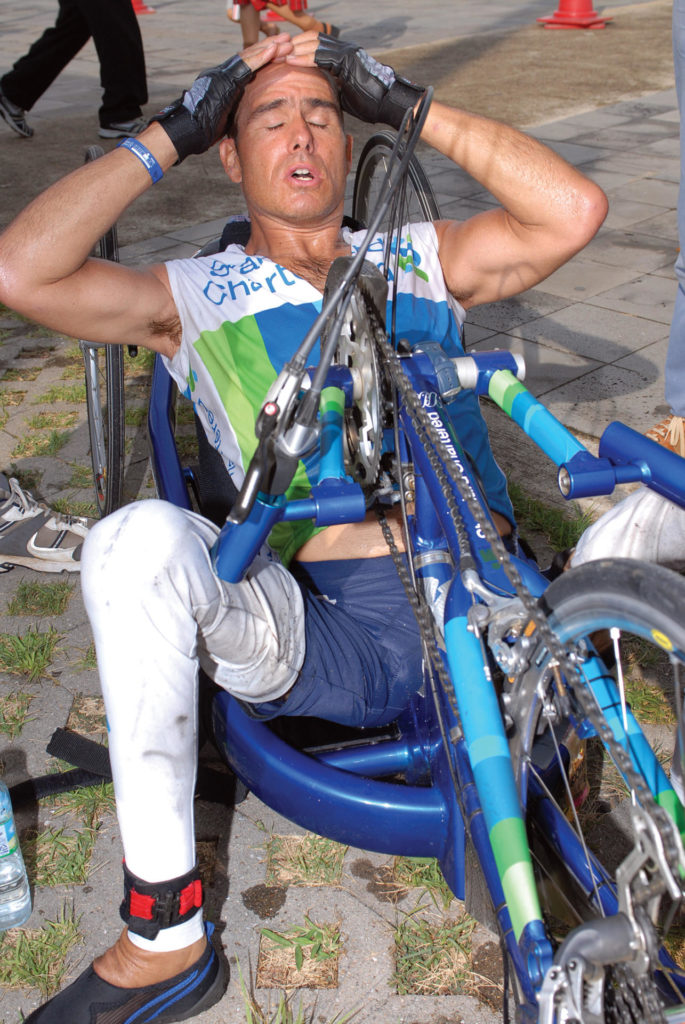
So, it was a biking summer. The new wetsuit was also useful for surfing so, when I could, I swam and body-boarded while getting re-acquainted with the ocean waves and currents which training in swimming pools does not provide.
Though I had not been in a racing wheelchair for two decades, I entered the Wharf to Wharf 10-km race in Santa Cruz thanks to the generosity of my sister Roberta who gave me her runner’s number. I completed the race in 33 minutes.
imply getting to the starting line of any race is one of the biggest challenges.
Manhandling all my equipment, and my wife Angie’s photography equipment, from SFO to Seoul was only the beginning. When transferring to the domestic flight to Cheju, the airline insisted I put my bike and chair in boxes. We needed to find a “box-maker” in a hurry.
Fortunately, a guy named Kim downstairs managed to construct boxes the size of Kansas, and we were on our way.
At the beachside Shilla Hotel on Cheju Island, we settled in for the pre-race mayhem. Putting my new racing wheels onto my wheelchair was a shock. They were too big and rubbed on the underside of the wheelchair. I was baffled. Angie suggested we get a hammer and pummel the metal tubing of the chair into submission. Not overly optimistic, we called the concierge and shortly after a man with a hammer arrived. After a bit of sign language he went to work beating the metal underside of my chair. In half an hour, my wheels fit again and I was back in business.
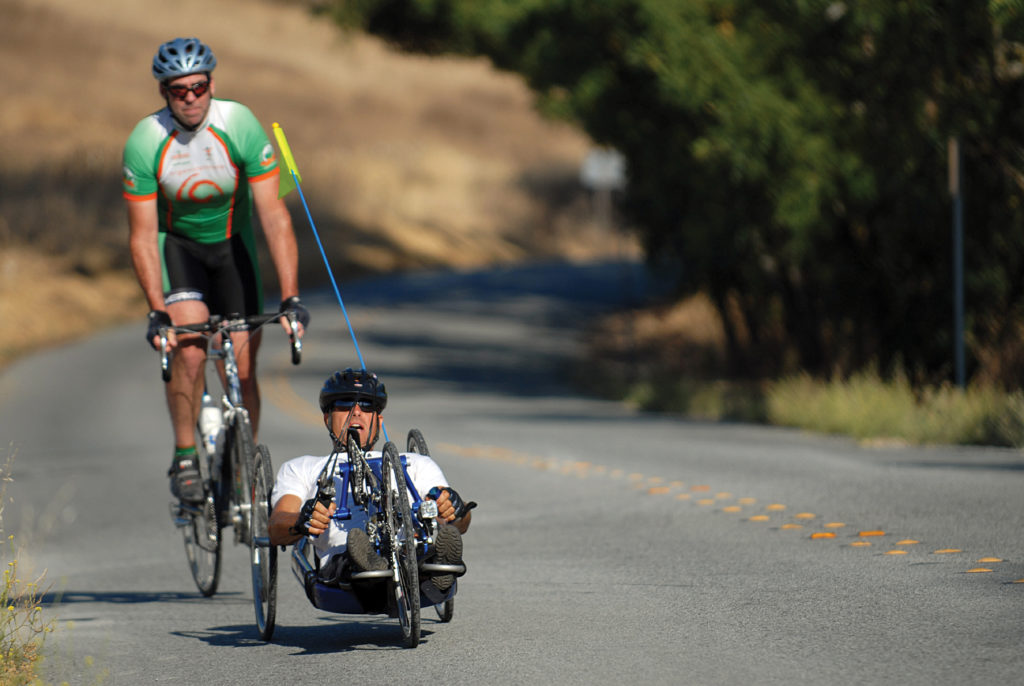
The days before the race were hot and humid with the sea calm and the wind strong. However, when I rose at 5 a.m. for the race, the sky was brooding and spitting lightning. At the starting line, everybody was making final preparations.
By now, I had a small support team constantly supporting me throughout the day. Suited up, we headed down to the beach for the start of the race. At 7 a.m., the officials called for a delay.
At 7:10 a.m. they canceled the swim due to the lightning. Disappointed, I re-focused on the bike and, at 8:05 a.m., I began the Korea Ironman. Within two minutes, my chain tried to fall off the sprocket. The road was deep with water as the rain poured down. Visibility was low as my sunglasses kept fogging up, and I had no windshield wipers.
But the ride began to get better as we caressed the coastal roads. For the first 10 km. the course was fairly flat, and I averaged close to 30 km. per hour, unheard of for me. Then we headed inland and into the mountains—and also the wind. Rounding a turn, I saw the steep hill everyone had been talking about. I could make out the riders inching their way up it, some now walking their bikes.
But Monte Bello had prepared me for this and I started the long slow slog to the top. Inch by inch, I cranked my way up and over the 500-meter high peak that would prove to be the second hardest part of the race. For another hour I traveled through the hills. Finally at the 130-km. mark the course flattened, and I could see the descent ahead. I put my arms into neutral and swept down the slopes for 10 km. at close to 60 km. per hour.
It was glorious, and I savored the calm as I knew the next hill was just ahead. And it did arrive. At the 155-km. point I was exhausted, but I was only 25 km. from my goal and my speed was still OK. Slowly I managed to heave myself up the last hill and again I was gliding toward the finish line.
One of the many camera vans shadowing me throughout the race positioned itself in front of me as I descended, the camera man filming out the back of the van. “Go, Go, Go!” I bellowed as I almost crawled up his tail pipe.
But the race was winding down, and I was heading for the transition. I completed the bike in 8:23:28 according to the clock though my watch said 8:15. Either way, I had finished the 180 km. in less than the nine hours I had hoped for. My team, and the media, gathered round as I rested and got ready for the marathon.
I spent 40 minutes recharging before moving on to the 14-km. loop I would need to complete three times. Though the bike route was hilly, in relative terms the run was worse. I found myself dazed and amazed at how long the hills stretched in front of me.
My heavy camel bag with fluids and extra tires proved no use as I could not manage to get anything out of the mouthpiece. Dragging myself onward, I managed to reach the end of the first loop and headed back. Fortunately, it was mostly downhill from here.
After 90 minutes, I finished the first loop and reached the stadium. My team fed me, then stripped me of my useless bag. I was back on course and feeling much better and lighter. I pushed into a rhythm and managed to get my speed up. But by now I had been racing for 10 hours and my body was beginning to spit back at me.
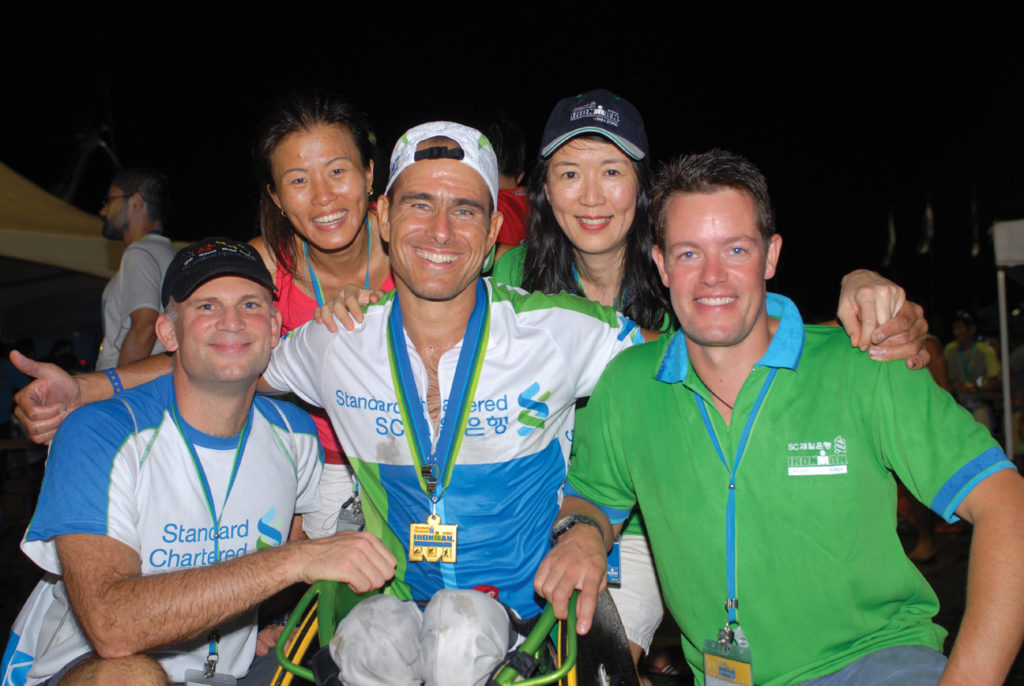
My stomach was queasy from all the different training gels and fluids I had consumed. I found that leaning over to push the chair, though efficient, made me feel sick as it squashed my heart and stomach. I alternated between sitting upright and leaning forward as I carried on. After another 70 minutes I reached my support team again, and I had just one loop to go.
By now it was dark, and some runners were starting to wobble. I had to be extra careful not to collide with anyone on the course. Nick had given me a whistle which I blew when flying downhill and past runners who were often too dazed to care. With just half a lap to go, I kicked up the pace a bit as the end was getting near. At 9:30 p.m. I crossed the finish line and into the crowd of well-wishers who showered me with congratulations. I had completed the Ironman in 13:21:29 and felt great.
For the next hour I had photos taken with dozens of supporters and friends. Finally we managed to get my clothes and equipment sorted out and me onto my feet. We headed to the hotel but it became obvious I needed medical attention. At the hospital a few hours later they told me my salt and fluid levels were dangerously low. I lay shaking and trembling on the gurney as my body reacted to all I had done over the past 14 hours.
But, as is always the case, I survived and lived to tell the tale, which is in fact what I had set out to do eight months earlier. Though I was not competing, and only wished to complete the course, coming in 122nd out of 180 in my age group is encouraging.
Surprisingly, upon waking today, I had just one thought. “What’s next?”
